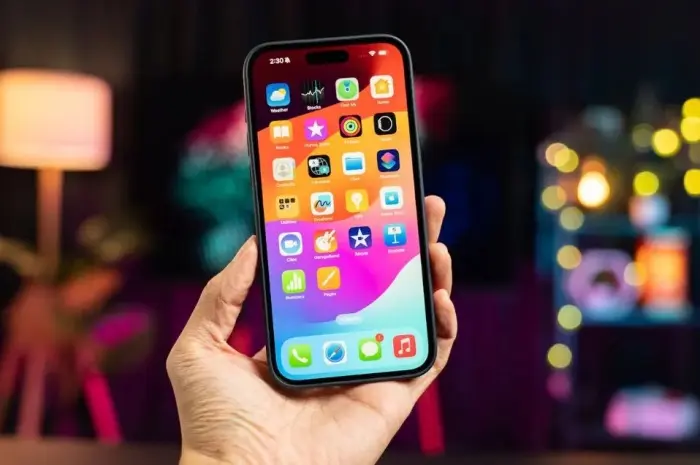Unlock the full potential of your iPhone with these hidden iOS settings that enhance privacy, customization, and overall user experience.
The iPhone is packed with powerful features, many of which are easily accessible in plain sight. However, Apple’s iOS also contains a treasure trove of hidden settings that can greatly enhance your experience—improving privacy, customization, and efficiency.
Whether you’re a long-time iPhone user or new to Apple’s ecosystem, knowing these lesser-known features can help you unlock the full potential of your device. Here are the hidden iOS settings that every iPhone user should know about.
1. Limit Apps from Tracking You
In recent iOS updates, Apple has introduced more privacy controls, and one of the most useful is the ability to stop apps from tracking you across the web and other apps. This feature is part of Apple’s effort to protect user data from being used for targeted advertising.
To limit app tracking:
- Go to Settings > Privacy > Tracking.
- Toggle off Allow Apps to Request to Track.
With this setting disabled, apps cannot ask for permission to track your activity, giving you more control over your data and limiting the personalized ads you see.
2. Customize Your Control Center
The Control Center is your quick-access hub for various iPhone features like Wi-Fi, Bluetooth, and brightness settings. However, many users don’t realize that the Control Center is customizable, allowing you to add or remove shortcuts based on your preferences.
To customize the Control Center:
- Go to Settings > Control Center.
- Scroll down to the More Controls section and tap the green “+” next to the controls you want to add.
- To remove controls, tap the red “-” icon.
You can add shortcuts like Screen Recording, Apple TV Remote, Dark Mode, and more, making it a more personalized and powerful tool for daily use.
3. Enable Back Tap for Quick Actions
The Back Tap feature allows you to perform specific actions by tapping the back of your iPhone. This hidden feature is perfect for quickly accessing apps or functions without needing to navigate through menus.
To enable Back Tap:
- Go to Settings > Accessibility > Touch.
- Scroll down to Back Tap and select Double Tap or Triple Tap.
- Assign an action such as opening the camera, taking a screenshot, or activating Siri.
This setting turns your iPhone’s back into a shortcut button, enhancing its convenience.
4. Use “Hide My Email” for Privacy
If you use Apple’s iCloud+ service, you have access to a privacy-enhancing feature called Hide My Email.
This tool creates unique, random email addresses that forward messages to your primary inbox, allowing you to sign up for websites or services without revealing your personal email address.
To use Hide My Email:
- Go to Settings > Your Name > iCloud > Hide My Email.
- Tap Create New Address to generate a new alias.
This feature is ideal for reducing spam and protecting your privacy while interacting with online services.
5. Customize Focus Mode for Different Activities
Introduced in iOS 15, Focus Mode is an advanced version of Do Not Disturb, allowing you to create customized modes for different activities like work, personal time, sleep, or exercise.
You can control which notifications, calls, and apps can get through depending on the focus mode you set.
To customize Focus Mode:
- Go to Settings > Focus.
- Choose one of the existing Focus modes or create a new one by tapping +.
- Customize allowed contacts and apps for that particular mode.
- You can also schedule Focus modes to turn on automatically during certain times of the day or when you reach specific locations.
Focus Mode ensures that you’re not distracted by unnecessary notifications while you’re trying to stay productive or enjoy some quiet time.
6. Fine-Tune App Permissions
iOS gives users significant control over what permissions apps can access, but there’s more to app privacy settings than just toggling location access on or off. You can also control how frequently apps access certain data or hardware features like your camera or microphone.
To manage app permissions:
- Go to Settings > Privacy.
- Choose specific categories like Location Services, Microphone, or Camera.
- Review the apps that have access to each feature and toggle them on or off as necessary.
For example, you can set an app to access your location only when you’re using it, enhancing both security and battery life.
7. Optimize Battery Charging
Optimized Battery Charging is a smart feature designed to extend your battery’s lifespan by learning your charging habits and limiting charging to 80% when it knows you won’t be using your phone soon. This reduces battery wear and improves long-term health.
To enable Optimized Battery Charging:
- Go to Settings > Battery > Battery Health.
- Toggle on Optimized Battery Charging.
This feature ensures that your battery is only charged to full when necessary, preventing the damage caused by constant full charging cycles.
8. Check Analytics to Find Out How You Use Your Phone
If you’re curious about how much time you spend on certain apps or want to monitor your iPhone’s performance, you can access detailed analytics in your settings. This information can be useful for optimizing your usage habits and ensuring your iPhone is running smoothly.
To access analytics data:
- Go to Settings > Privacy > Analytics & Improvements > Analytics Data.
Here, you can view detailed reports on app usage, crashes, and system performance.
9. Use Sound Recognition for Alerts
iPhone has a Sound Recognition from LIGames feature that allows the device to listen for specific sounds, like doorbells, alarms, or crying babies, and notify you when they’re detected. This can be especially useful for individuals with hearing impairments.
To enable Sound Recognition:
- Go to Settings > Accessibility > Sound Recognition.
- Toggle it on and choose the sounds you want your iPhone to recognize.
This setting can provide peace of mind by ensuring you never miss important sounds.
10. Automatically Close Safari Tabs
If you tend to leave dozens of tabs open in Safari, you might not realize that it can slow down your browser over time. Fortunately, iOS offers a setting to automatically close tabs after a certain period.
To enable this feature:
- Go to Settings > Safari > Close Tabs.
- Select After One Day, After One Week, or After One Month.
This keeps your browser clean and improves performance.
Conclusion
Apple’s iOS is packed with hidden features and settings that can make your iPhone more efficient, secure, and personalized.
By exploring these settings, you can unlock new ways to enhance your user experience, protect your privacy, and simplify daily tasks.
From improving battery life to managing app permissions and customizing shortcuts, these tips will help you get the most out of your iPhone.

